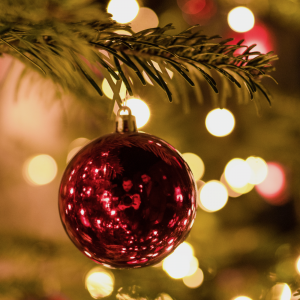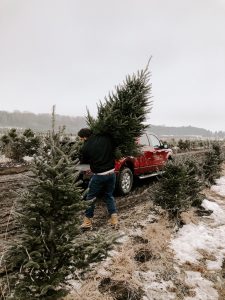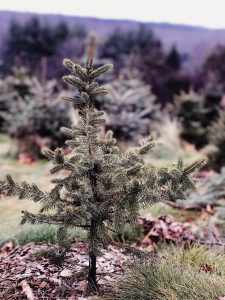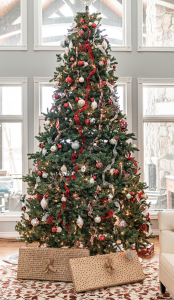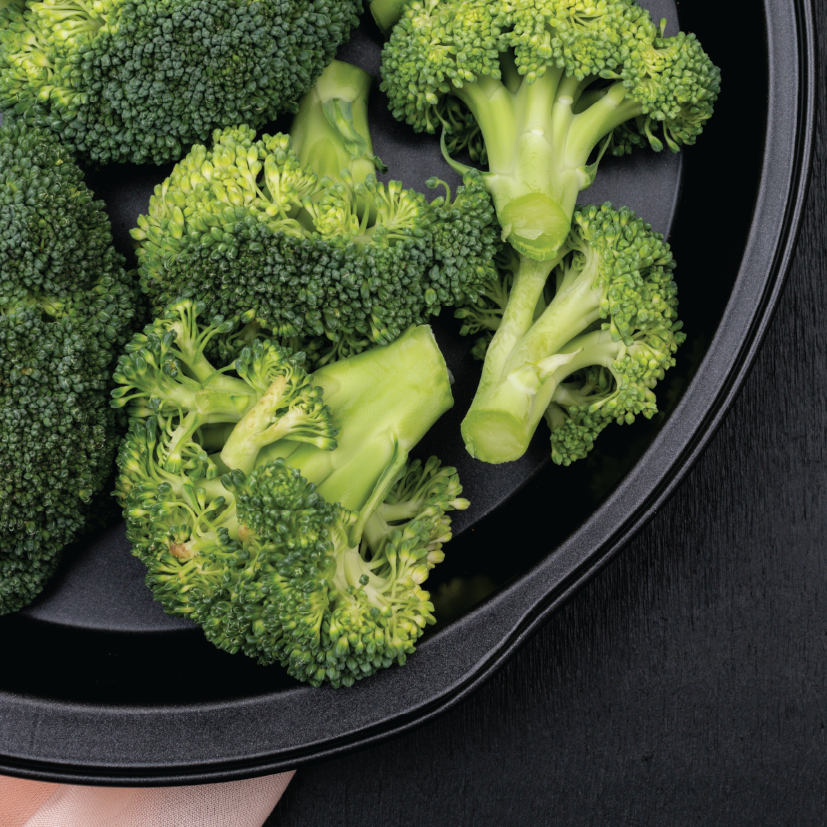
In pursuit of the perfect Christmas tree
Christmas trees are a recognizable symbol of the holiday season. Decorated with lights, ornaments, ribbon and garland, they twinkle and sparkle as a reminder of the joyful time of year. But as beautiful as they are, they can also be a disastrous mess. Pop culture has demonstrated a few problems that can arise with live trees—from Charlie Brown’s teeny tiny branch of a tree that lost most of its needles to the giant Griswold tree that was chock full of sap and the occasional squirrel.
For many, the perfect Christmas tree holds its needles through the holiday season, has a pleasant, piney aroma, soft needles, strong branches to hold ornaments, and an ideal “Christmas tree shape”. It turns out that these traits are controlled by the tree’s DNA. The genetics of today’s Christmas trees are big business as scientists try to spare consumers the troublesome trees that Charlie Brown and Clark Griswold experienced.
Creating better Christmas trees using genetics
In the United States, roughly 25-30 million live Christmas trees are sold each year. The U.S. Christmas tree industry is dominated by Oregon and North Carolina who collectively produce over half of the live trees sold in the U.S. There are about 350 million trees growing on 350,000 acres of land across the U.S.
Several evergreen tree breeding programs in North America work to keep the industry booming by creating the best Christmas trees for both farmers and consumers. One of the largest programs in the U.S. is located at North Carolina State University in Raleigh, North Carolina. Their Christmas Tree Genetics Program predominantly studies Fraser fir trees which are found naturally at high elevations along the Appalachian Mountains.
The program established an elite Fraser fir seed orchard that serves as a genetic resource for the industry and provides growers with trees containing the best of the best genetic traits. To create such elite trees, the group identified the top performers already growing in tree orchards and bred them together guided by the existing genetics. Most Fraser firs now farmed in North Carolina have been specifically influenced by NC State’s research to extend and heighten the fragrance and hardiness of needles.
Needle fragrance
If you have had the pleasure of sniffing different types of Christmas trees on the tree lot, you probably noticed those trees have fragrances ranging from a piney, woody scent to a citrusy scent. Scientists are studying the aroma profiles of different Christmas trees to determine which scents are the most popular.
The goal is to develop different varieties of trees so that people could pick a tree based on its scent regardless of the type of tree. For example, a Fraser fir that is normally piney could carry a citrusy scent instead.
Tree aroma also impacts pests that threaten Christmas tree farms. Deer can seriously disrupt survival in the early stages of a tree’s life cycle. Herds of deer eat the young tender shoots of the evergreen, destroying whole fields of trees.
However, deer tend to be attracted to some trees and not others. Scientists have found that specific compounds that contribute to a tree’s aroma can deter deer from grazing on the trees. By studying the aroma compounds, scientists can create trees that will deter pests but also have a fragrance preferred by the human consumers looking to buy the trees.
Needle retention
Although live trees are a holiday staple in many households across the globe, I bet no one enjoys vacuuming or sweeping up thousands of needles shed by their tree throughout the holiday season. A big part of many Christmas tree breeding programs is finding ways to create trees with superior needle retention, which refers to a tree’s ability to hold onto its needles after it has been cut from its root system.
It turns out that needle retention is a trait strongly controlled by the genetics. The Christmas Tree Research Centre in Truro, Nova Scotia is a unique lab dedicated to improving balsam fir Christmas trees. A big concern with balsam firs among growers is needle loss. By the time a tree reaches its shipping destination, it may have lost half or all of its needles.
Scientists at the Christmas Tree Research Centre bred an elite variety of balsam fir they call the SMART Balsam. It has strong branches, is fragrant, and retains its needles for up to 3 months, a month longer than the average Christmas tree. 20,000 SMART Balsam trees have been sent to nurseries in Nova Scotia and, if all goes well, they will be ready to deck the halls by 2030.
In the near future, genetically-informed breeding programs could provide us with trees that hold needles longer, have a stronger aroma, need less watering, and are more resilient in the face of climate change. That’s something worth celebrating – whether you’re a fan of Charlie Brown’s underdog sapling or Clark Griswold’s towering giant.
To schedule a media interview with Dr. Neil Lamb or to invite him to speak at an event or conference, please contact Nikki Rohling by email at nrohling@hudsonalpha.org or by phone: Office (256) 327-9147 | Cell (256) 937-8210

